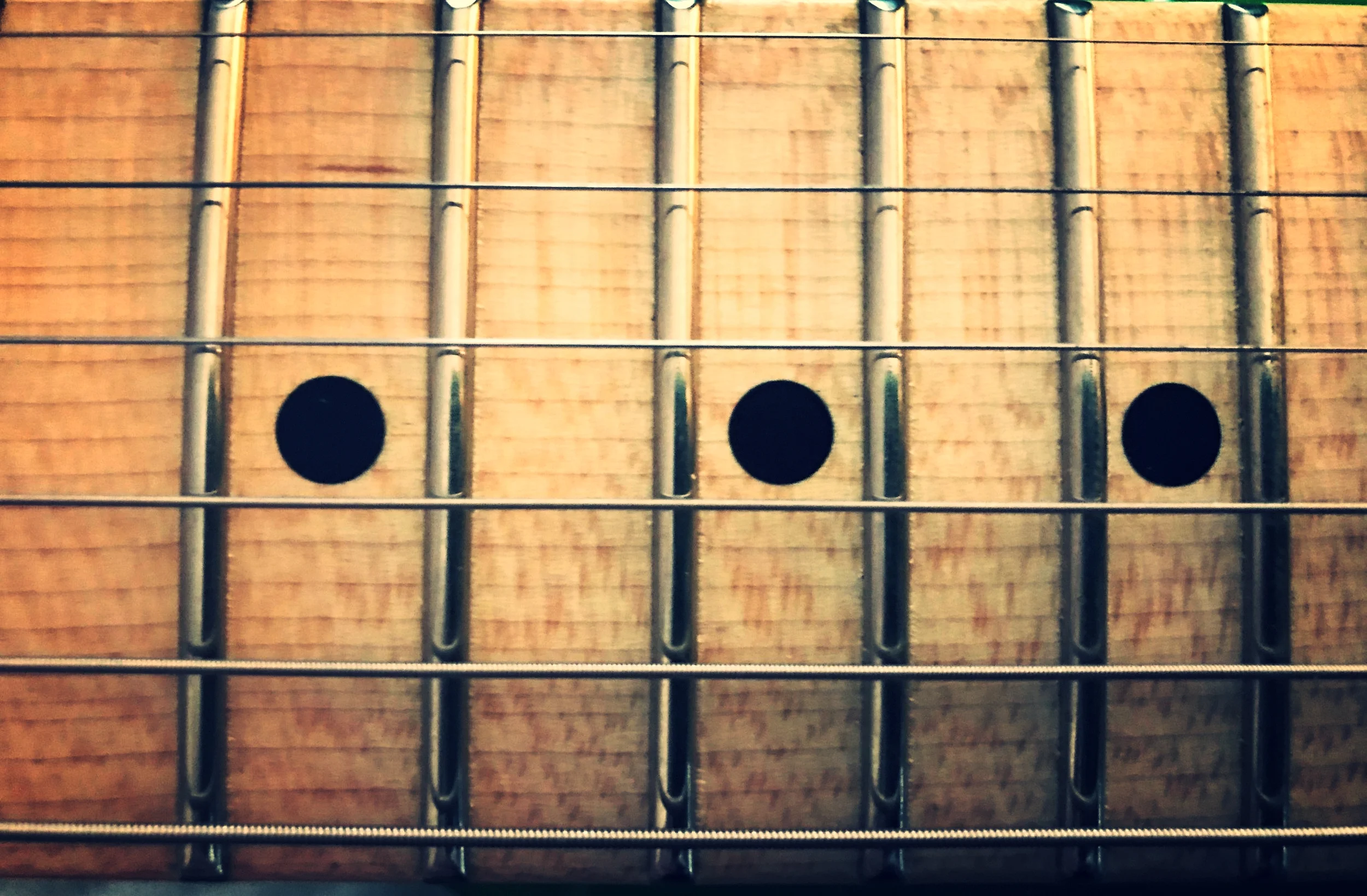Getting lost on the fretboard is one of the most discouraging things while playing guitar. If you really want to see your guitar practice stick, you should be speaking the note names that you’re playing while you practice guitar.
You don’t have to do this for every single exercise, but work in sections every day where you try and test yourself to immediately identify a note by name. For example, what’s the 9th fret on the B string? (It’s G# by the way)
Learning all the notes on the neck will help you grow as a guitar player. Knowing the notes on the neck can help with scales, chords, harmonization, and lots more. So, how do you find your way when you’re up on the fretboard and feel like you’re lost? Simple…use octaves.
If you don’t know what an octave is, here’s what Merriam-Webster defines it as:
a musical interval embracing eight diatonic degrees
To put it plainly, if you’re playing a G note, the octave is the same note name either higher or lower in register. For this trick to work effectively, you’ll need to know the note names on the 5th and 6th strings of your guitar neck. Luckily these two strings are where most players know the note names, because we’re building chords from these strings.
Join Chasing Sound's Six String Sunday
Subscribe to get the best guitar stuff the internet has to offer.
Lets take our example of the 9th fret on the B string. If I take my pinky on the 9th fret of the B string and go three frets down, I end up on the 6th fret of the D string. Still lost? No problem, go 2 frets down and place your index finger on the 4th fret of your low E, and you have the note you’re looking for - G sharp.
There are multiple ways you can find any note by using your E or A string. The way I just described is only one way out of many. Check out this diagram below for more ways!
- Example 1 shows the example we’ve been talking about above.
- Example 2 shows how you can find just about any note on the 4th string, by using the 6th string. In the example, we’re finding the name of the 5th fret on the 4th string, by using the 3rd fret on the 6th string, which is G.
This’ll work for nearly any note on the 4th string (except the 1st fret, but we’ll get to that in a moment). As long as you make sure your fingers have a 3 fret span, you’ll always be able to find notes on the 4th AND 3rd string, by using either the low E or A strings.
- Example 3 shows what I was speaking about above. Any time you have a note on the 4th or 3rd strings (D or G strings), you can use the low E or the A string to find the note. All you do is make an octave shape, and if you know the note on the low E or A string, you’ll know the note on the 4th or 3rd strings. In this example, we’re trying to find the note name of the 5th fret on the G string, by using the 3rd fret of the A string. What’s the note name? C
- Example 4 shows a great Wes Montgomery-esque type shape. This is a way you’re able to find any note on the B string by using the guitar’s D string. In this case, we’re trying to find the note name of the 8th fret on the B string. We’re using the D string to make sure that we have a 4 fret span and playing the 5th fret on the D. Still stuck? use the octave shape we used in exercise 2, and you’ll see that if you use the low E string, the note name is G.
- Example 5 shows how to find any note name on the high E string by using the G string. In the example we’re trying to find the note name of the 8th fret of the high E string. 3 frets lower we can see that 5th fret of the G string is an octave. Once again, you can use the method we used in exercise 3 to determine that the note name is C. Alternatively (and probably much quicker), if you’re trying to find a note name on the high E string, just use the corresponding note on the low E string to figure out the note name.
- Example 6 shows 2 more ways how to find note names on both the B and high E strings. In this example we’ll be using A and D strings to find the note, and will always have a 3 note span.
- Example 7 shows one more way to find notes on the B string by using the low E string. In this case we’re trying to find the note name of the 1st fret on the B string. 3 frets up on the low E string you’ll find the note name, G sharp. I’m also showing on the seventh fret how you can always use the low E string to find notes on the high E string, as they’re always the same note!
Never get lost again!
I hope these neck diagrams are helpful for you, and that you won’t get lost on the fretboard after really working on this type of stuff day after day. If you have any questions about how this works, please feel free to reach out to me on either Twitter or Facebook.

